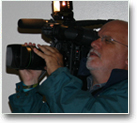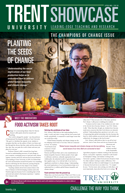 Trent University’s DNA Analysis of Fraudulent Caviar Results in ConvictionFOR IMMEDIATE RELEASE Thursday, November 23, 2006, Peterborough When Trent University graduate student and forensic scientist Kristyne Wozney conducted a DNA analysis of fish eggs in April 2005, it was more than an academic exercise; in fact, she was assisting with a high-profile police investigation. Thanks to Ms. Wozney’s work and the facilities at the Natural Resources and DNA Profiling Centre at Trent, police were able to convict a major Toronto-area caviar dealer of unlawfully importing without a permit, as reported in the Globe & Mail on November 15, 2006. Ms. Wozney’s DNA analysis showed that the species of caviar found in the tin was a mixture of the protected species beluga, sevruga and osetra, and not the un-endangered kaluga type listed on the label. Ms. Wozney, who is pursuing her Masters degree in Trent’s Watershed Ecosystems Graduate Studies Program as well as working as a forensic scientist for the Natural Resources DNA Profiling and Forensic Centre (NRDPFC), was excited when she learned the outcome of her analysis. “It’s nice to see that your work is used in court, especially when it’s part of an effort to protect endangered species,” she said. By examining the mitochondrial DNA taken from the caviar, Ms. Wozney was able to determine that it came from sturgeon in the Caspian Sea, a premium variety that can fetch up to $150 per ounce on the Toronto market. The import permit used by the offending company claimed their cargo originated from the Amur River, which lies northeast of Mongolia. Caviar from this Russian region is considerably cheaper, costing only $45 per ounce. In April of this year, the United Nations’ Convention on International Trade in Endangered Species of Wild Fauna and Flora (CITES) denied granting a quota to Russia for the export of Caspian Sea caviar when it failed to increase conservation efforts to protect its rapidly declining sturgeon populations. Environment Canada turned to Trent’s Wildlife Forensics Laboratory to identify the fish species used in the caviar, in order to determine exactly where it came from. On November 14, 2006 the Ontario Court of Justice fined the caviar importer $3,000 and ordered the company relinquish the seized shipment, valued at $305,000. For her Masters degree at Trent, Ms. Wozney is working on another project for Environment Canada that involves developing DNA databases for other CITES-listed species such as rare orchids. Ms. Wozney’s databases of wildlife DNA will be used in similar fashion to the caviar case to determine the geographic origin of endangered species.
-30- |
































